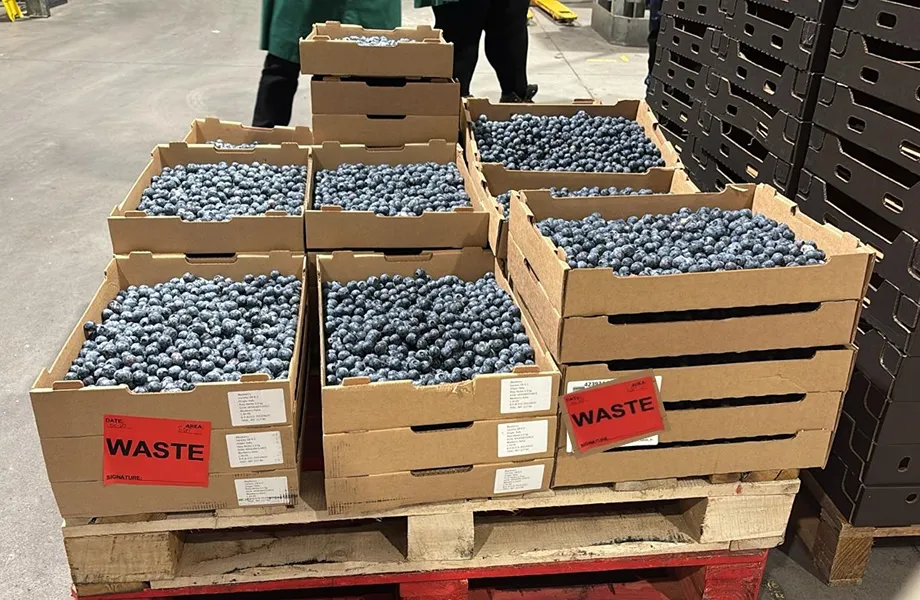In 2023, the growth of the berries market in Italy continues, with family spending increasing from 170 million Euros to over 202 million Euros in twelve months, representing a 19.1% increase in value.
Italian Berry – GfK data updated as of 31/12/2023 illustrate a growth scenario, showing a 67% increase in the Italian berries market over the last three years. During the same period, blueberry spending doubled from 67 million in 2020 to 122 million Euros in 2023.
Berries account for only 3.5% of family spending on fresh fruit in Italy, and in terms of quantity, berries (blueberries, raspberries, blackberries, and currants) make up only 0.5% of the purchased quantities.
While overall fruit purchases by Italian families have decreased in quantity (-5.9% total) and the number of purchasing families (-0.1%), berries represent a counter-trend segment with positive basic indicators, indicating growth potential. The continuous increase in penetration, with new families buying berries for the first time each year, is promising.
Italian household penetration up to 32,3%
Approximately one-third (32.3%) of Italian families make at least one berries purchase annually through various retail channels. This represents a 3.5 percentage point increase from 2022 (28.8%), equating to almost one million additional purchasing families. In the last year, there were nearly 8.3 million buying families, compared to just over 6.3 million three years ago.
The percentage of buying families making at least two purchases has also moderately increased, from 68.0% to 68.5% in the last year.
Average prices increased 15.6%
The growth in spending has also been influenced by the increase in average prices, rising from EUR 12.39/kg in 2022 to EUR 14.31/kg in 2023 (+15.6%). This inflationary trend is nearly triple the ISTAT consumer price index (+5.7%). All berries products, except currants, contributed to the price increase.
The inflationary trend has also impacted the average spending per family, growing from EUR 23.05 in 2022 to EUR 24.46 in 2023 (+6.1%).
Quantity decreased by 3.1%
Price pressure has not led to a decline in consumption quantities. In one year, the tons of berries purchased by Italian families increased from 13.7 thousand to 14.1 thousand, marking a 3.1% decrease between 2022 and 2023. However at the family level, the quantity decline is significant, dropping by 8.2% annually to 1.71 kg.
Buying behavior affected by high prices
The average spending per purchase has increased by 10.5%, rising from EUR 3.39 in 2022 to EUR 3.75 in 2023. Rising prices have made buyers more cautious in their purchasing behaviors.
In the last year, both the purchase frequency and volume per purchase have declined. While Italian families bought berries an average of 6.8 times a year in 2022, this decreased to 6.5 times in 2023, reflecting a 4.0% decrease. The quantities per purchase also decreased to 260g, a 4.4% negative change compared to 2022 when they were 270g.
Buyers are in the Northwest and of high and upper-middle segments
The penetration index (percentage of buying families out of total families) peaks mainly in the Northwest; above the national average is also the Northeast, while the Center, South, and islands are still significantly below the average, with Sicily and southern regions having half the national average penetration. Family purchasing volume follows the same geographical profile, although with fewer differences between the north and south.
Families purchasing berries mainly belong to a high and upper-middle socio-economic segment. Socio-economic class, however, does not have a significant correlation with the quantities purchased.
Regarding family size, larger families show greater penetration but lower quantities purchased per year. In other words, single individuals buying berries are less frequent than larger families, but they purchase larger quantities.
Age also positively correlates with purchases per family; households with older purchasing decision-makers make larger quantity purchases.
Outlook
In an Italian context showing declining consumption in the fresh fruit category, berries continue to show positive signals and significant growth potential.
Penetration is still highly differentiated based on geographic, socio-economic, and urban area factors, offering ample opportunities for growth.
A return to price dynamics unaffected by negative contingencies (such as El Nino and other phenomena) could further boost berries consumption, a category gaining popularity among an increasing number of Italian families.
Image by cookie_studio on Freepik










